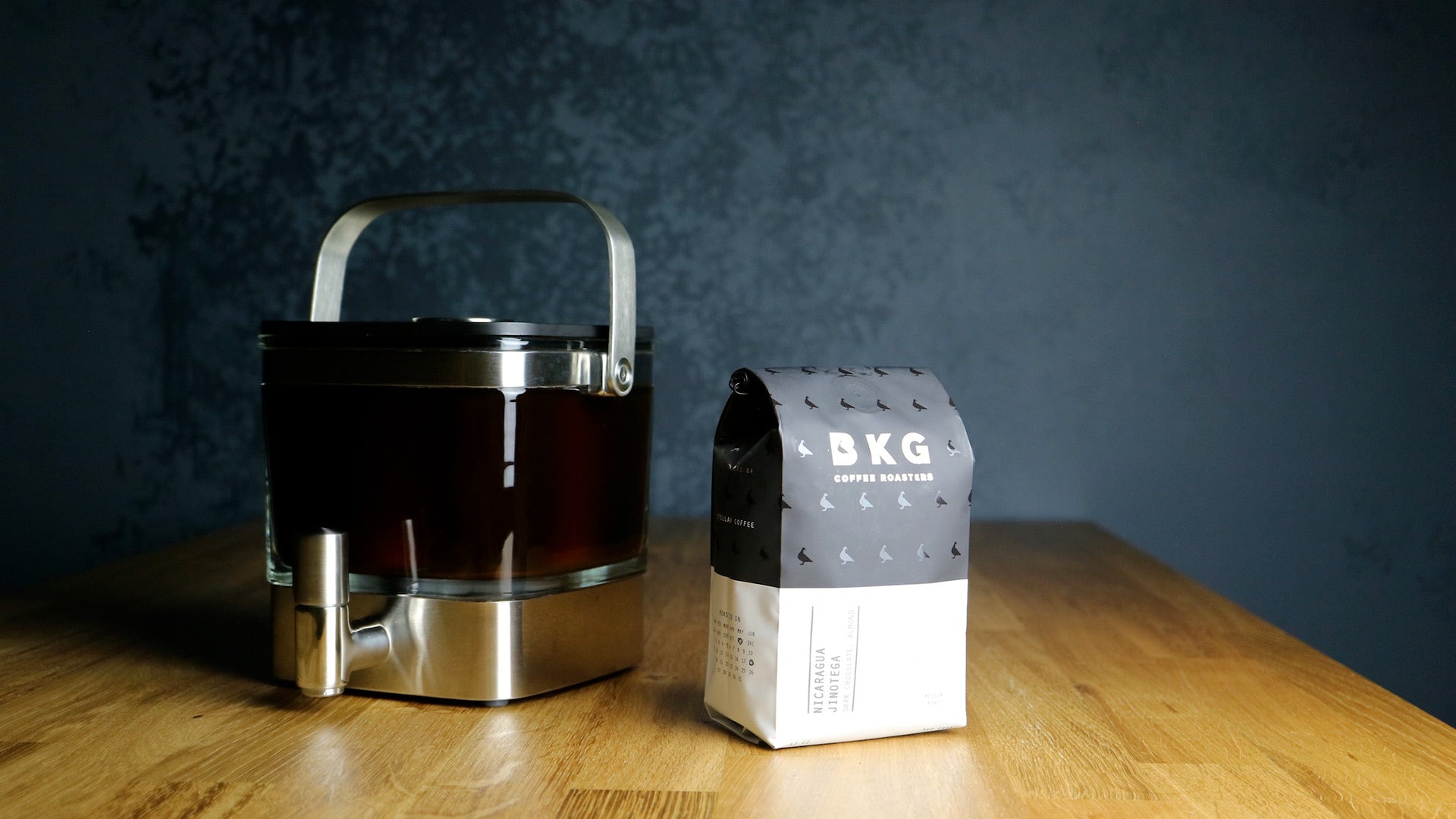In 1600's urban Japan, said to be inspired by Dutch traders’ coffee concentrate, the Japanese applied their own cold brew tea method to ground coffee by soaking coffee grinds in spring water. Quite literally referred to as mizudashi, it’s the first record of a cold water brewed coffee. Today, it’s commonly known as cold brew.
To compensate for the low thermal activity during brewing, cold brew is usually brewed for a significantly longer period of time. The long contact time makes a highly caffeinated concentrate. The total immersion makes cold brew a very consistent method, and the brew usually comes out smoother and sweeter. Furthermore, low temperature prohibits certain chemicals from being fully extracted. Some of those chemicals are highly associated with the acidity in hot coffee. Therefore, cold brew is usually regarded as less acidic. Some even claim it’s a better option for people suffering from IBS symptoms.
To make cold brew from home. You will need:
. coffee beans
. burr grinder
. brew container
. coffee holder (mesh/nut bag, any material you prefer )
. paper filter (optional)
. scale
. spoon or stirrer
There are many cold brew brewers in the market to choose from. If you are without the proper brewer, you can also use a combination of a mason jar and nut bag, or basically any solution that fits the purpose.
STEP 1: GRIND YOUR COFFEE
You can comfortably use a coarser grind with cold brew for the ease of reducing coffee fines. Since cold brew is usually made in larger quantities, it's not fun when extreme fines clog your filter, and you end up with a messy mess!
If you have the same brewer as mine, I’m using 200g of coffee or you can use 143g of coffee per 1 liter of water based on the volume of your container.

STEP 2: ASSEMBLE YOUR BREWER
It doesn’t matter if you are using a brewer that’s specifically designed for brewing cold brew, or if you are just grabbing whatever you have in your kitchen. As long as your brewer is properly assembled, your cold brew will come out the same. I recommend using a paper filter as an extra layer because paper is very effective in confining the fine grounds.
Also, if you’re using alternative materials, consider the fact that after the cold brew is ready you’ll need to remove the coffee from the brewer. So, the coffee holder of your choice should be sturdy enough to withstand the weight of the saturated grinds and water (just a paper filter is probably not enough). It also needs to be porous enough to let the cold brew pass through easily. And your container should have a large enough opening for the coffee holder and coffee to come out with no effort.
Today, I’m demonstrating with a brewer that comes with a metal mesh basket. I use a filter designed for a drip coffee brewer to contain the coffee, which also provides extra clarity to the finished coffee.
STEP 3: ADD WATER TO SATURATE COFFEE
Add 1400g of cold water or 1:7 coffee to water ratio depending on the volume of your vessel. It is very important to saturate the coffee grinds. Use a spoon to agitate the slurry until you get a rich, thick and foamy “crema” on top.
Be mindful if you’re using a spoon or stirrer with sharp edges not to tear the mesh or paper filter.


STEP 4: STEEP
Once your slurry feels effortless to stir and has no dry clumps, your cold brew is ready for steeping. Depending on the coffee you’re using and your desired level of extraction, a 12~15 hour steep time at room temperature is a good range to start.

STEP 5: DRAIN
Drain the cold brew once it’s done steeping. Make sure to allow ample time for the water to drip through. The spent coffee grinds shouldn’t feel as though it's still weighted down by water when you lift it up. It can take up to 30 minutes before you can safely assume all the water has passed through.


STEP 6: ENJOY
Stir your concentrate well and enjoy your coffee! At this stage, the coffee is at a concentrated strength. You can cut the concentrate with water and/or milk. Add 2 to 2.5g of water to every 10g of concentrate or you can also shake up the concentrate with ice in a cocktail shaker.
HOW TO DIAL IN YOUR COFFEE
Cold brew suits more developed coffee better. It’s recommended to use a roast level closer to medium or darker. The total immersion nature of cold brew naturally ensures an even extraction. The long contact time in combination with the low acidity content also makes cold brew sweeter. The concentrate oftentimes needs dilution for a more pleasant serving strength. However, if you’ve done that but still not digging the flavor, we can then look into if there’s a way to dial in your coffee better.
If your coffee is still tasting too light and watery after 12 hours, check if the ambient temperature is too cold? Try steeping it longer. Is there still room to grind your coffee finer without clogging the filter? You can also introduce more agitation by stirring the concentrate every couple of hours. If all else fails, check if the water is too hard?
If you find your cold brew is tasting too intense, try more dilution or shake it up with ice. You can also try it with less brew time.
If your cold brew takes a long time to finish dripping, especially when you can see water pooling inside the filter, try massaging the filter to create passage for the liquid. Also, grind your coffee coarser next time and use a sifter to remove the fines.
BONUS PRO TIPS
Cold brew is really easy breezy however, agitation is really important when it comes to making sure all coffee grinds are saturated. For today’s brew, I poured 1000g of water first, made sure there weren’t any dry grounds, and I let it sit for about 10 minutes before I resumed agitation.
This extra 10 minutes of “blooming” can make sure the water penetrates the coffee well. And if there is indeed some grinds still not saturated throughout, they will surface during this 10 minutes and you can easily break it down as they float to the top.
After 10 minutes, you’ll find the slurry much easier to stir. Stir until you can see the rich “crema”. Why is this important? Because the "crema" indicates that the gas trapped inside the coffee grinds are released, therefore telling us that the coffee is left fully saturated. If you do this step right, you’ll find little to no foam remaining by the time the cold brew is ready for draining.
Once I finished stirring, I poured the remaining 400g of water over the spoon, which also makes sure all the coffee grinds are in the water and makes the clean-up a little easier. Check out our brew guide video to better understand the process!
HAPPY BREWING
Do you still find yourself yearning for a glass of cold brew even as the temperature outside keeps on dropping? Hopefully after today’s post, you’ll understand a little better why cold brew is entirely different in its chemical makeup, and the balanced, sweet, low acidity and sometimes syrupy coffee is what you’re craving for. We especially hope to inspire you enough to give this recipe a try. Cold brew stays fresh up to one week in the fridge, so make a batch for the week! Let us know what you think. Do you like cold brew better? How many hours do you end up steeping your experiment? Let us know! Until next time, we wish you a wonderful day :)


